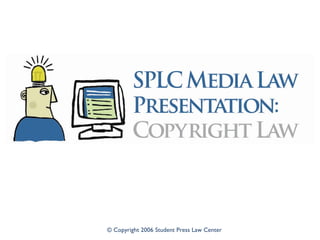This document provides an introduction to common copyright law issues for high school student journalists and their advisers. It defines copyright infringement as using someone else's original work without permission. It explains the basic concepts of copyright including the exclusive rights it provides owners (reproduction, adaptation, distribution, public performance, public display) and its purposes of encouraging creative works and promoting societal knowledge. It distinguishes copyright from other forms of intellectual property like patents and trademarks.












































































































